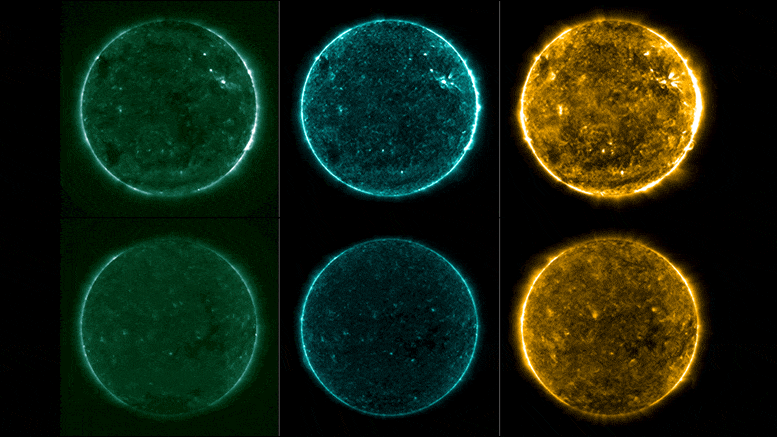
To calibrate AIA, they would attach an ultraviolet telescope to a sounding rocket and compare that data to the measurements from AIA.
There are some drawbacks to the sounding rocket method of calibration.That means there’s downtime where the calibration is slightly off in between each sounding rocket calibration. .
Sun seen by AIA in 304 Angstrom light in 2021 before degradation correction (see image below with corrections from a sounding rocket calibration).First, researchers needed to train a machine learning algorithm to recognize solar structures and how to compare them using AIA data.To do this, they give the algorithm images from sounding rocket calibration flights and tell it the correct amount of calibration they need.
After enough of these examples, they give the algorithm similar images and see if it would identify the correct calibration needed.
With enough data, the algorithm learns to identify how much calibration is needed for each imageG
Sun seen by AIA in 304 Angstrom light in 2021 with corrections from a sounding rocket calibration (see previous image above before degradation correction).Once the program can recognize a solar flare without any degradation, the algorithm can then determine how much degradation is affecting AIA’s current images and how much calibration is needed for each. .
Indeed, when comparing their virtual calibration data to the sounding rocket calibration data, the machine learning program was spot on. .
With this new process, researchers are poised to constantly calibrate AIA’s images between calibration rocket flights, improving the accuracy of SDO’s data for researchers. .Researchers have also been using machine learning to better understand conditions closer to home. .By using data science techniques to large volumes of data, they could apply machine learning techniques to develop a newer model that helped them better understand how energized particles from space rain down into Earth’s atmosphere, where they drive space weather.
As machine learning advances, its scientific applications will expand to more and more missions. For the future, this may mean that deep space missions – which travel to places where calibration rocket flights aren’t possible – can still be calibrated and continue giving accurate data, even when getting out to greater and greater distances from Earth or any starsReference: “Multichannel autocalibration for the Atmospheric Imaging Assembly using machine learning” by Luiz F